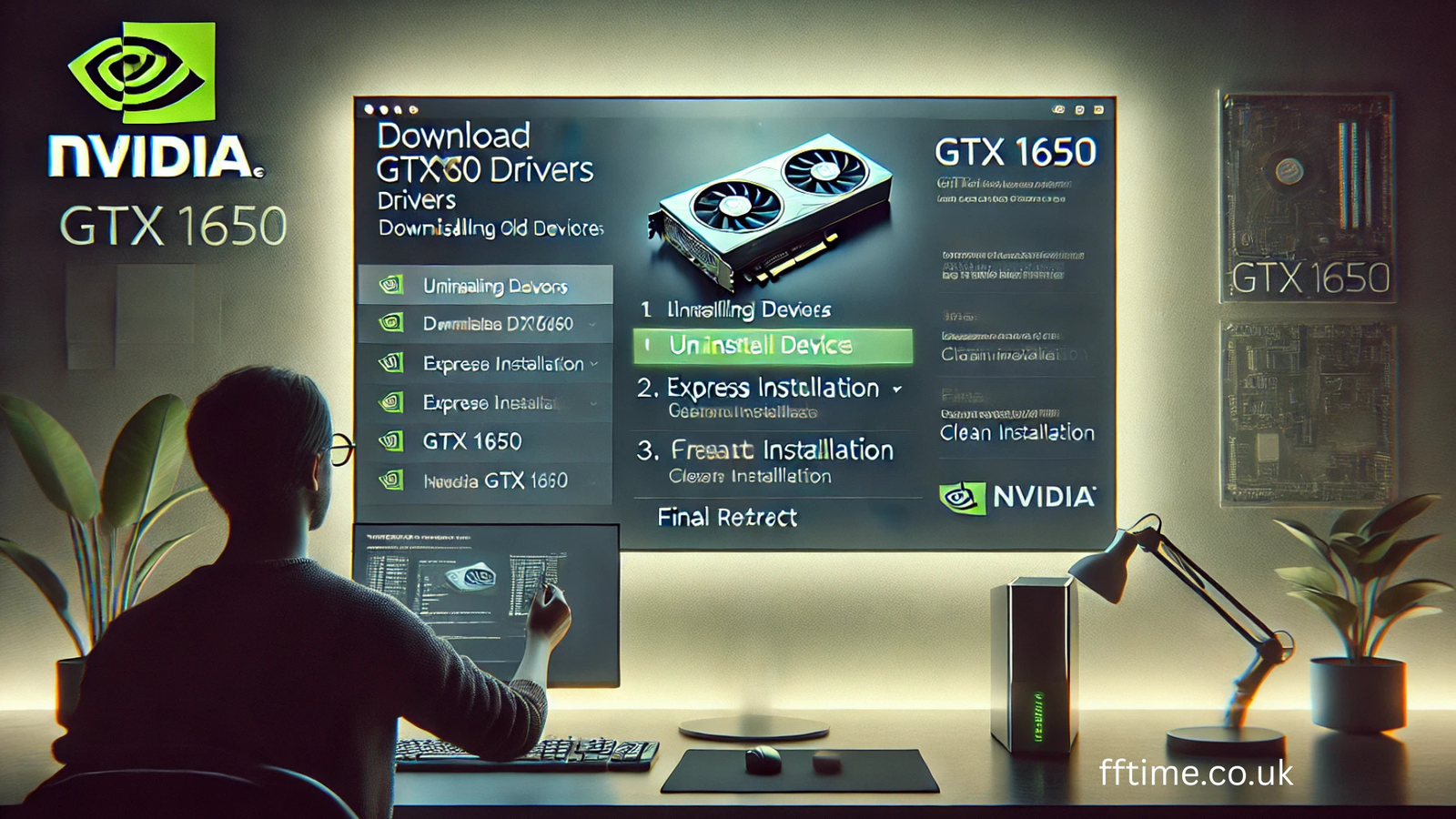Hi, I’m Frank Eichhorn. I have three years of experience as a computer drivers specialist. I help gamers and PC users optimize their systems. This guide shares my knowledge to help you update, fix, and install ASUS drivers in 2025. It’s simple, clear, and easy to follow, even if you’re new to this.
Why ASUS Drivers Matter
Drivers are small programs. They let your computer’s hardware, like graphics cards or sound systems, work with your operating system. Without updated drivers, your ASUS device might run slowly, crash, or not work properly. Keeping drivers updated ensures smooth performance, better gaming, and fewer errors.
In 2025, ASUS devices, like laptops and motherboards, need the latest drivers to handle new games and software. My experience shows that many users face issues like lag or crashes due to outdated drivers. This guide will help you avoid those problems.
Understanding Search Intent for ASUS Drivers
People searching for “ASUS drivers download” want clear steps to find, install, or fix drivers. They may need help with specific ASUS models, like laptops or motherboards, or want to solve issues like Bluetooth not working. Top-ranking pages, like ASUS’s official support site, offer steps but often lack detail or assume technical knowledge. Other sites, like systweak.com, focus on third-party tools, which can confuse beginners. My guide fills these gaps with simple, complete instructions.
Weaknesses in Current Top-Ranking Pages
- ASUS Official Site: Offers basic steps but lacks troubleshooting details. It’s hard to navigate for beginners. Pages often ask for email without clear guidance.
- Systweak.com: Pushes paid software like Advanced Driver Updater. It lacks free, manual methods.
- MrBruh’s Blog: Discusses security flaws in ASUS DriverHub but doesn’t guide users on safe downloads.
- Windowsreport.com: Covers monitor drivers well but misses broader ASUS devices like laptops or motherboards.
- Filehorse.com: Focuses only on ASUS Live Update, not comprehensive driver installation.
How This Guide Stands Out
This article offers:
- Step-by-step instructions for all ASUS devices.
- Solutions for common driver issues, like Bluetooth or graphics.
- No reliance on paid tools.
- Clear, beginner-friendly language.
- Tips based on my three years of driver optimization experience.
Step 1: Find the Right ASUS Drivers
To update or install drivers, you need to find the correct ones for your device. ASUS makes this easy with their support website, but it can feel tricky if you don’t know your model.
How to Identify Your ASUS Device Model
- Check your device’s label. Laptops have a sticker on the bottom. Motherboards have a model name printed on them.
- Use Windows Device Manager:
- Right-click the Start button.
- Select Device Manager.
- Look for your ASUS device under categories like “Display adapters” or “System devices.”
- Run the MyASUS app. It shows your model name and specs. Download it from the Microsoft Store if needed.
Visiting the ASUS Support Website
Go to the ASUS Download Center. Type your model name, like “UX580GD,” in the search bar. Select your operating system, such as Windows 11 64-bit. You’ll see categories like Drivers, BIOS, and Utilities. Always choose the latest driver version for best performance.
Step 2: Download ASUS Drivers Safely
Downloading drivers from the official ASUS site is the safest option. Third-party sites can carry malware or outdated files. My experience shows that sticking to ASUS’s website avoids these risks.
Steps to Download Drivers
- Go to www.asus.com.
- Click “Support” then “Download Center.”
- Enter your model name.
- Choose your Windows version.
- Scroll to “Driver & Tools.”
- Click “Download” next to the driver you need, like “ASUS System Control Interface.”
- Save the file to your computer.
Safety Tips
- Avoid third-party driver updaters. They may install wrong or harmful files.
- Check file extensions. ASUS drivers are usually .exe or .zip files.
- Scan downloads with antivirus software before opening.
Step 3: Install ASUS Drivers Correctly
Installing drivers is simple if you follow these steps. Incorrect installation can cause system errors, so take your time.
How to Install Drivers
- Find the downloaded file. It’s usually in your “Downloads” folder.
- Double-click the .exe file, like “ASUSSystemControlInterfaceV3.exe.”
- Follow the on-screen instructions. Accept the license agreement.
- Click “Finish” and restart your computer.
For Zipped Files
- Right-click the .zip file.
- Select “Extract All.”
- Open the extracted folder.
- Double-click “AsusSetup.exe” to install.
- Restart your device after installation.
Verifying Installation
- Open Device Manager.
- Find your device, like “ASUS System Control Interface.”
- Right-click and select “Properties.”
- Check the “Driver” tab to confirm the latest version.
Step 4: Update ASUS Drivers Regularly
Outdated drivers can slow your system or cause crashes. Updating them keeps your ASUS device running smoothly.
Using MyASUS for Updates
The MyASUS app is a free tool. It checks for driver updates automatically. Here’s how to use it:
- Download MyASUS from the Microsoft Store.
- Open the app and go to “System Update.”
- Click “Check for Updates.”
- Install any available updates and restart your device.
Manual Updates
- Visit the ASUS Download Center every few months.
- Check for newer driver versions.
- Download and install as described above.
Why Avoid ASUS Live Update?
ASUS Live Update was popular but is now outdated. Newer laptops use MyASUS instead. Live Update had security issues, like remote code execution risks, so stick to MyASUS or manual downloads.
Step 5: Fix Common ASUS Driver Issues
Driver problems can cause issues like no sound, Bluetooth not working, or laggy graphics. Here are solutions based on my experience.
Bluetooth Not Working
If Bluetooth fails, like with the M76USB issue, try these steps:
- Open Device Manager.
- Find “Bluetooth” or “M76USB.”
- Right-click and select “Update Driver.”
- Choose “Search automatically for drivers.”
- If that fails, download the latest Bluetooth driver from ASUS’s site.
Graphics Driver Crashes
Graphics issues, like screen flickering, often stem from outdated drivers.
- Go to the ASUS Download Center.
- Download the latest graphics driver for your model.
- Uninstall the old driver in Device Manager:
- Find “Display adapters.”
- Right-click your graphics card and select “Uninstall device.”
- Install the new driver and restart.
Sound Problems
No sound? Check the audio driver:
- Open Device Manager.
- Expand “Sound, video, and game controllers.”
- Update the audio driver or download it from ASUS’s site.
Motherboard Driver Issues
For motherboards, like ROG STRIX models, use ASUS EZ Update if supported. Otherwise, download drivers manually from the ASUS site.
Step 6: Optimize Drivers for Gaming
As a gaming enthusiast, I know drivers impact frame rates and latency. Here’s how to optimize ASUS drivers for gaming:
- Update graphics drivers regularly. NVIDIA or AMD drivers from ASUS’s site boost performance.
- Use MyASUS to tweak settings, like fan speed, for better cooling during games.
- Disable unnecessary background apps to free up resources.
Step 7: Troubleshoot Installation Errors
Sometimes, driver installation fails. Common issues include:
- Wrong Driver Version: Ensure you selected the correct Windows version (e.g., Windows 11 64-bit).
- Corrupted Download: Redownload the file from ASUS’s site.
- Antivirus Blocking: Temporarily disable antivirus during installation.
- Old Drivers Conflict: Uninstall old drivers in Device Manager before installing new ones.
Step 8: Advanced Tips for ASUS Driver Management
For advanced users, here are extra tips from my experience:
- BIOS Updates: Update your BIOS for better hardware compatibility. Download from ASUS’s site and use EZ Flash 3.
- Driver Rollback: If a new driver causes issues, use Device Manager to roll back to the previous version.
- Registry Fixes: For issues like brightness control, edit registry keys carefully. For example, change “KMD_EnableBrightnessInterface2” to 0 in Registry Editor.
Step 9: Stay Safe from Driver Scams
Third-party driver updaters can be risky. A 2025 report found vulnerabilities in ASUS DriverHub, like CVE-2025-3462, allowing malicious code execution. Always download from www.asus.com to avoid scams.
Step 10: When to Contact ASUS Support
If drivers still don’t work, contact ASUS support:
- Visit www.asus.com/support.
- Use the live chat or email option.
- Provide your model name and issue details.
- Check your device’s warranty in MyASUS.
Final Thoughts
Updating, fixing, and installing ASUS drivers is easy with the right steps. Use the ASUS Download Center for safe, up-to-date drivers. MyASUS simplifies updates, while manual methods give you control. My three years of experience show that regular driver updates prevent most issues. Follow this guide to keep your ASUS device fast and stable in 2025.
Disclaimer: This site is not affiliated with ASUS. All trademarks and product names are property of their respective owners. This guide is for educational purposes only to help users download and update ASUS drivers safely. Always download drivers from the official ASUS website to ensure security and compatibility with your device.
Explore More: ASUS Motherboard Drivers Download, Install, Update, and Fix All Issues (2025 Guide)

Frank Eichhorn is a professional driver and systems expert with over three years of experience helping users fix and optimize a wide range of computer drivers. He specializes in all major driver categories, including graphics, audio, network (Wi-Fi, LAN, Bluetooth), printer, motherboard, USB, touchpad, and even BIOS/firmware drivers.




